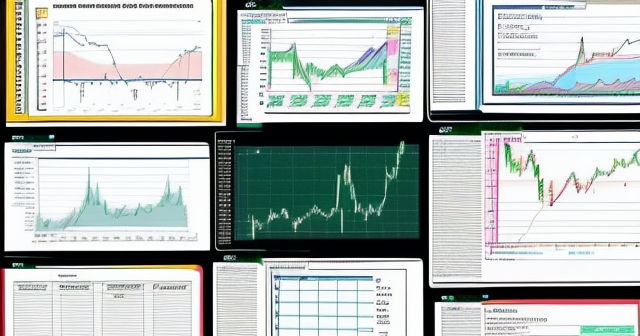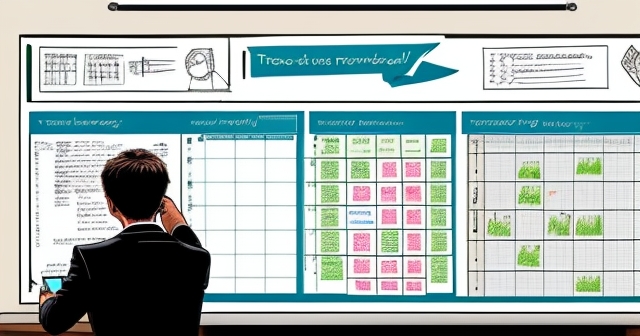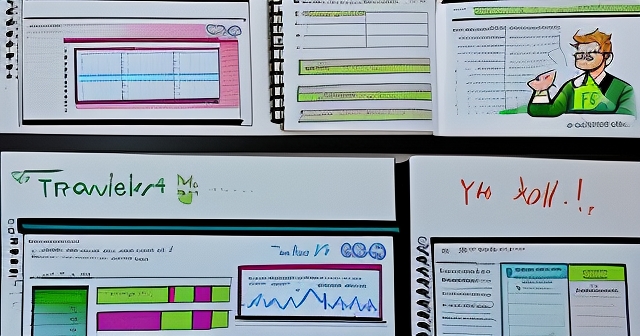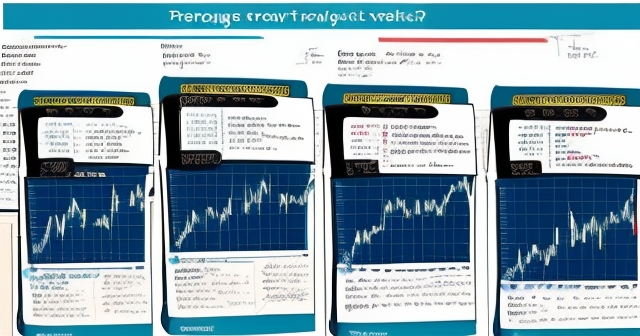Setting Realistic Trading Goals for Long-Term Success
Setting goals is a fundamental practice in virtually every domain of life, from career progression to personal fitness. In the complex and demanding world of financial trading, establishing clear, well-defined goals is not just beneficial; it is absolutely critical for evaluating performance, fostering discipline, and ultimately, achieving sustainable success. Without goals, you are essentially sailing without a compass, reacting to market fluctuations without a clear destination or plan. This lack of direction often leads to impulsive decisions, emotional trading, and ultimately, significant losses. Goals provide a framework for your trading activities, allowing you to measure progress, identify areas for improvement, and stay focused amidst the noise and volatility of the market.
However, the mere act of setting goals is not enough. The nature of the goals you set is paramount. Many aspiring traders, fueled by stories of overnight riches or aggressive marketing, make the common mistake of setting highly unrealistic expectations. These often manifest as ambitious monetary targets – think aiming to double an account in a month, or targeting a fixed, substantial daily profit regardless of market conditions. While aspiration is healthy, such goals are frequently detached from the realities of market dynamics and risk management principles. They can pressure traders into taking excessive risks, deviating from their strategies, and falling prey to destructive emotions like greed and fear. This chapter in a trader’s journey often ends in disappointment and financial loss. Our aim is to guide you towards setting goals that are not only motivating but also realistic, measurable, and conducive to long-term growth and survival in the markets.
Here are three key aspects to keep in mind when setting trading goals:
- Establish Specific Objectives: Clearly define what you want to achieve to make tracking progress easier.
- Focus on Process Over Outcome: Concentrate on the activities you can control, rather than on external results like profit amounts.
- Assess and Adjust Regularly: Continuously evaluate your goals and be willing to adapt them as your trading skills and market conditions evolve.
| Goal Type | Description |
|---|---|
| Performance Goals | Goals based on measurable trading outcomes, such as win rate or risk-to-reward ratio. |
| Process Goals | Goals centered around the actions you take while trading, like following your trading plan. |
| Risk Management Goals | Goals focused on managing risk, such as setting maximum loss limits and adhering to stop-losses. |
The Foundation: Why Trading Goals Matter and Where Many Go Wrong
Let’s delve deeper into why having trading goals is non-negotiable. Imagine learning any complex skill – playing a musical instrument, mastering a foreign language, or becoming proficient in a sport. Progress in these areas is typically measured against milestones and objectives. Did you master that scale? Can you hold a conversation in that language? Have you improved your speed or accuracy? Trading is no different. Goals serve as your benchmarks. They allow you to answer crucial questions like: Is my strategy working? Am I managing risk effectively? Am I improving my decision-making process? Without specific goals, evaluating your performance becomes subjective and vague, making it difficult to identify strengths, weaknesses, and areas needing adjustment.
Moreover, goals provide discipline. A trading plan, which we will discuss further, outlines your strategy, risk management rules, and execution criteria. Goals reinforce your commitment to sticking to this plan. For instance, if one of your goals is “Strictly adhere to my trade entry rules,” you are more likely to resist the urge to jump into a trade based on a gut feeling or external tip, even if the market seems to be running away from you. Discipline is the bridge between knowing what you should do and actually doing it, and well-defined goals strengthen that bridge.

However, as we touched upon, the pitfalls often lie in the type of goals set. The most prevalent error among novice traders is setting goals based purely on aggressive monetary outcomes. “I want to make $1000 per day,” or “I need to grow my account by 50% this month.” While the desire for profit is the engine of trading, fixing goals solely on these high-stakes monetary figures creates immense pressure. The market doesn’t care about your financial needs or desires. It moves according to supply, demand, sentiment, and countless other factors you cannot control. When your goal is a fixed dollar amount, especially a large one relative to your capital, you might find yourself forcing trades, increasing position sizes recklessly, or abandoning your strategy when facing a small loss, all in a frantic effort to hit that arbitrary target.
This singular focus on aggressive monetary outcomes blinds traders to the true drivers of long-term success: consistent execution, diligent risk management, and continuous learning. It shifts the focus from the controllable aspects of trading (your process, your discipline, your risk per trade) to the uncontrollable outcome (market price movement). This is where many journeys derail.
| Common Mistakes in Goal Setting | Description |
|---|---|
| Unrealistic Profit Targets | Aiming for high returns in a short time can lead to risky trading behaviors. |
| Ignoring Risk Management | Not incorporating risk management into your goals can jeopardize your trading account. |
| Overemphasis on Money | Focusing too much on monetary outcomes rather than process and performance can lead to emotional trading. |
The Perils of Unrealistic Expectations: High Risk, Low Survival Rate
Let’s dissect why setting overly ambitious goals, particularly those focused purely on aggressive monetary gains, is inherently dangerous in trading. Imagine you have a small trading account, say $5,000, and your goal is to make $2,500 (50%) profit within a month. To achieve such a return consistently in a short timeframe requires taking on a disproportionately high level of risk per trade. Standard, prudent risk management often suggests risking no more than 1-2% of your capital per trade. On a $5,000 account, this means risking $50 to $100 per trade. To make $2,500 in a month, even with a decent win rate and risk-to-reward ratio, you would likely need a significant number of winning trades, or you would have to risk substantially more than 1-2% per trade.
If you consistently risk, for example, 10% of your account per trade to reach a high target quickly, a short string of losses – which are an inevitable part of trading, even with a winning strategy – can rapidly decimate your capital. Three or four consecutive losses at 10% risk can reduce your account by 35-40% or more. Recovering from such a deep drawdown is exponentially harder than losing the initial capital. Markets naturally experience periods of consolidation, unexpected news events, or just unfavorable conditions for your specific strategy. Your strategy will have losing streaks and periods where it underperforms. If your goals force you to take excessive risk during these periods, you simply won’t survive to see your strategy perform well again. The market does not offer guaranteed high returns without commensurate risk. Chasing unrealistic profits forces you to take on excessive risk, making your trading career incredibly fragile.

Conversely, while less common, goals that are set too low can also be detrimental. If your goal is trivially easy to achieve, you might become complacent or bored. This can lead to a lack of focus, inconsistent application of your strategy, or even spur-of-the-moment risky trades just to “make things interesting.” Goals should be challenging enough to require discipline and effort, but not so difficult as to be unattainable through diligent practice and sound methodology. The sweet spot lies in goals that push you to improve your process and execution within the bounds of realistic market behavior and risk management.
Why Risk Management is a Goal in Itself
This brings us to a cornerstone of sustainable trading: risk management. Far from being just a protective measure, stringent risk management should be one of your primary trading goals. Why? Because in trading, your first and most important objective is not necessarily to make money, but to survive. Without capital, you cannot trade. Protecting your capital against significant losses ensures you remain in the game, allowing your strategy to play out over a large number of trades, enduring inevitable drawdowns, and capitalizing on profitable opportunities when they arise.
| Risk Management Goals | Description |
|---|---|
| Max Percentage Risk | Never risk more than a specific percentage of your account on a single trade. |
| Use Stop-Losses | Ensure every trade has a clearly defined stop-loss before entering a position. |
| Loss Limit | Set a maximum cumulative loss for the day or week to prevent excessive losses. |
Consider the concept of drawdown – the peak-to-trough decline in your account balance. A 10% drawdown requires an 11.1% gain to recover. A 20% drawdown requires a 25% gain. A 50% drawdown requires a 100% gain. As the drawdown increases, the percentage gain required to return to breakeven increases at an accelerating rate. This is why controlling losses is mathematically more important than chasing huge wins. Your goals should therefore heavily emphasize limiting losses and managing your exposure to risk.
Specific risk management goals could include:
- Sticking to a maximum percentage risk per trade: For example, “Never risk more than 1.5% of my total account equity on any single trade.”
- Implementing and respecting stop-losses: “Ensure every trade has a clearly defined stop-loss placed according to my strategy rules before entry.”
- Defining and adhering to a maximum daily or weekly loss limit: “If my account experiences a cumulative loss of X% today/this week, I will stop trading immediately.”
- Maintaining a minimum Risk-to-Reward (R:R) ratio: “Only take trades where the potential profit (target) is at least 1.5 or 2 times greater than the potential loss (stop-loss).”
These are tangible, controllable goals. You can actively work towards them and measure your adherence. Achieving these risk-focused goals directly contributes to the longevity of your trading career, which in turn makes potential long-term profitability achievable. Without solid risk management goals, even a profitable strategy can lead to ruin due to poor execution during losing periods or emotional reactions.
Shifting the Focus: From Dollars to Discipline and Performance
Since focusing solely on monetary targets is fraught with peril, where should your focus lie? The answer lies in shifting your goals towards performance and process. These are the aspects of trading that you, as a trader, can actually control and improve upon. Instead of “Make $500 today,” a more effective goal might be “Execute my trading plan flawlessly today,” or “Maintain a winning trade rate of 60% over the next 100 trades,” or “Reduce my average drawdown per losing trade by 10%.”
Performance goals are centered around objective metrics related to your trading outcomes, but viewed through the lens of statistical probability and long-term averages, not short-term windfalls. Key performance metrics to build goals around include:
- Risk-to-Reward Ratio: As mentioned, aiming for a favorable R:R ratio on average ensures that even if your win rate is moderate, your winning trades compensate for your losing trades and generate a net profit over time. A goal could be “Achieve an average R:R of at least 1:2 across all closed trades this quarter.”
- Drawdown Control: Minimizing the depth and frequency of drawdowns is a sign of robust risk management and consistent execution. Goals might focus on “Keep maximum monthly drawdown below 5%” or “Avoid consecutive large losing trades through better stop-loss placement.”
- Win Rate: While not the only metric, win rate is important. However, it should be viewed over a statistically significant sample size of trades (ideally 100+ trades), not day-to-day. A goal could be “Increase my win rate on Strategy X setups from 45% to 50% over the next 200 trades through better filtering of signals.”
- Consistency of P/L Volatility: A skilled trader’s equity curve tends to be relatively smooth, with gradual upward movement and controlled pullbacks. Wild swings in profit and loss often indicate inconsistent strategy execution or poor risk management. A goal might be “Reduce the volatility of my daily P/L results by adhering strictly to position sizing rules.”

Process goals, on the other hand, are about the *actions* you take as a trader, independent of the immediate outcome of any single trade. These are perhaps the most powerful goals, especially for beginners, because they focus entirely on what is within your control. Examples include:
- “Review my trading journal for 30 minutes every day.”
- “Perform pre-market analysis according to my routine before placing any trades.”
- “Stick to my defined trading hours and avoid trading outside of them.”
- “Only trade approved setups from my trading plan.”
- “Maintain a calm and disciplined mindset, even after a losing trade.”
When you focus on consistently executing your process and improving your performance metrics, the positive monetary outcome becomes a natural result over time, rather than a stressful, elusive target you must chase aggressively. This shift in perspective is fundamental to becoming a professional trader.
If you are trading Forex or exploring CFD products, choosing the right broker is part of your process. When considering your platform options, Moneta Markets offers flexibility and technological advantages worth noting. They support mainstream platforms like MT4, MT5, and Pro Trader, combined with high-speed execution and competitive spread settings, providing a solid trading experience.
Adhering to Your Trading Plan: A Foundational Goal
Your trading plan is the blueprint for your operations. It details everything from the markets you trade, the strategies you use (entry/exit criteria, stop-loss placement), risk management rules (position sizing, maximum drawdown), and even your trading psychology management approach. Building a comprehensive, well-thought-out trading plan is a significant step in itself, but its value is unlocked only through consistent adherence.

Making “Strict Adherence to My Trading Plan” a core, non-negotiable goal is perhaps the single most impactful step you can take as a developing trader. Why? Because even a mediocre trading plan, consistently executed, will yield more reliable results than a potentially brilliant plan that is ignored whenever the market presents an emotional challenge or a seemingly ‘obvious’ opportunity outside the rules. Inconsistency in execution is the enemy of profitability because it prevents you from accurately assessing whether your *strategy* is effective. You never give the underlying edge a chance to play out over a sufficient number of trades.
Treat your trading plan like the law. Your goal is to follow it to the letter. This includes:
- Only taking trades that meet all your predefined entry criteria.
- Placing stop-losses exactly as specified by your plan, without widening them or moving them further away from your entry if the trade goes against you.
- Taking profits at your predefined targets or according to your specific exit rules, without holding on based on hope or getting out too early due to fear.
- Managing position sizes precisely as calculated by your risk management rules, which are part of your plan.
Initially, this might feel restrictive, especially if you are used to trading based on intuition or news headlines. However, remember that consistency breeds confidence and allows for objective evaluation. If you execute your plan perfectly for 100 trades and are not profitable, you can definitively conclude that the *plan* needs adjustment, not that you failed to follow it. This makes the improvement process much more targeted and effective. Therefore, setting a goal like “Execute 95% of my trades this month in strict adherence to my trading plan” provides a measurable, achievable target that directly impacts your trading success.
Practical Steps for Setting Your First Realistic Goals: Baby Steps are Key
Now that we understand the importance of realistic, performance-based, and process-oriented goals, how do you actually set them? The key is to start small and build momentum – think “baby steps,” as the provided data analysis wisely suggests. Trying to implement too many changes or achieve overly ambitious targets at once can be overwhelming and lead to failure, just like unrealistic monetary goals.
Here are some practical steps:
- Assess Your Current Situation: If you have been trading, look at your historical data (if you have a journal). What is your average risk per trade? Do you use stop-losses consistently? What is your typical winning percentage? How volatile is your P/L? Be honest about your current habits and performance.
- Identify One or Two Key Areas for Improvement: Don’t try to fix everything at once. Based on your assessment, what is the most critical area holding you back? Is it inconsistent stop-loss usage? Taking impulsive trades? Overleveraging? Choose one or two specific things to focus on first.
- Set Specific, Measurable, Achievable, Relevant, Time-bound (SMART) Goals: The SMART framework is useful here.
- Specific: Clearly define what you want to achieve. Instead of “get better at risk management,” say “Use a stop-loss on 100% of my trades.”
- Measurable: How will you track progress? “Journal every trade and record whether a stop-loss was used.”
- Achievable: Is this goal realistic given your current skill level and capital? Using a stop-loss on every trade is achievable; doubling your account in a week for a beginner is not.
- Relevant: Does this goal align with your overall objective of becoming a consistent, profitable trader? Yes, good risk management is directly relevant.
- Time-bound: Set a deadline. “Use a stop-loss on 100% of my trades for the next month.”
- Prioritize Process Goals First: For beginners, focusing on executing the process correctly is often easier and more effective than immediately targeting specific performance metrics like win rate or R:R, which are outcomes of the process. Goals like “Stick to my pre-trade checklist for every trade,” or “Avoid trading during major news announcements this week” are great starting points.
- Integrate Risk Management Goals Immediately: Goals around defining and sticking to your maximum risk per trade and always using stop-losses are non-negotiable from day one.
- Consider Small, Realistic Performance Goals (Percentage-Based): Once you have some trading data, you might set a modest performance goal. Instead of a dollar target, think in percentages relative to your capital. For example, “Aim for a consistent average return of 2-3% per month over the next six months, with a maximum monthly drawdown not exceeding 5%.” This is a much more realistic and healthy target than aiming for 20-30% monthly, especially without using excessive leverage.
Remember, the goal-setting process is iterative. You set goals, work towards them, track your progress, and then evaluate and adjust them based on your actual performance and market conditions. It’s a continuous cycle of learning and refinement.

Emotional Discipline and Goal Setting
Trader psychology – the management of emotions like greed, fear, hope, and regret – is profoundly intertwined with goal setting. Unrealistic goals are a primary catalyst for negative emotional trading. When your goals are too high, you feel immense pressure to perform. A small loss can trigger fear of not hitting your target, potentially leading you to abandon your stop-loss or seek riskier trades to “make it back quickly.” Conversely, a winning streak might induce greed and overconfidence, leading you to increase position sizes beyond your risk limits in an attempt to capitalize on perceived momentum and hit your inflated target even faster.
Realistic goals, grounded in process and performance rather than unrealistic monetary outcomes, help regulate these powerful emotions. When your goal is to “Follow the plan perfectly,” a losing trade is not a personal failure to hit a profit target; it is simply one expected outcome within a probabilistic strategy. You are still achieving your goal if you followed your rules, even if the trade resulted in a loss. This detachment from immediate monetary outcomes and focus on the process reduces emotional swings and promotes a more rational, disciplined approach.
Furthermore, having clear risk management goals (like max loss per trade or day) provides emotional guardrails. If you’ve hit your maximum daily loss limit, your goal is to stop trading. This prevents the emotionally driven “revenge trading” that often leads to compounding losses. Knowing your limits and having a plan for when things go wrong provides a sense of control and reduces anxiety, allowing you to approach the market with a calmer, more objective mindset.
Integrating emotional discipline into your list of goals is also beneficial. This could be a process goal like “Review my mindset before placing a trade” or “Take a 15-minute break after a losing trade before considering the next one.” Acknowledging and actively managing your psychological state is crucial for consistent execution and overall trading well-being.
The Role of Data: Evaluating and Adjusting Your Goals
Once you have set your initial goals and begun trading, diligent tracking and analysis of your performance data are essential. Your trading journal becomes an invaluable tool here. Record every trade, including entry/exit points, position size, risk taken, reason for the trade (based on your plan), the outcome, and importantly, whether you adhered to your plan and goals. Over time, this data provides an objective picture of your performance.

The provided data analysis highlights the importance of evaluating goals based on actual trading data. It suggests doing this after a sufficient number of trades, perhaps 200 or more. This sample size helps smooth out random variations and provides a statistically meaningful insight into your strategy’s edge and your execution consistency. Based on this empirical evidence, you can then evaluate whether your initial goals were appropriate and what adjustments are needed.
For example, after analyzing 200 trades, you might find:
- Your win rate is consistently 40%, but you were aiming for 60%. If your R:R is high enough, 40% might still be profitable. Your goal might need to shift from increasing win rate to optimizing your R:R or focusing on filtering for even higher probability setups within your strategy.
- You consistently hit your profit targets, but your average loss is larger than your stop-loss initially indicated. This suggests you might be moving your stop-loss or getting stopped out prematurely due to poor placement. Your goal could become refining stop-loss placement based on market structure or increasing buffer.
- Your maximum drawdown is higher than your goal. This could indicate position sizing issues, taking on too much risk per trade, or a need to implement stricter daily/weekly loss limits.
- You find that you are only adhering to your trading plan rules 70% of the time. Your goal needs to be reinforced around discipline and consistency of execution.
Evaluation is not about judging yourself harshly but about using objective data to inform your path forward. Your goals are not set in stone; they are dynamic and should evolve as you gain experience and your performance changes. What is a realistic goal for a beginner trader with limited capital and experience will be different from a goal for a seasoned professional. Regularly reviewing your data and adjusting your goals accordingly ensures that your targets remain relevant, challenging, and aligned with your progress and the realities of the market.
Selecting a brokerage platform is also a step that requires careful consideration and evaluation, much like evaluating your trading performance. If you are actively engaged in Forex trading or planning to be, understanding the platform’s capabilities and regulatory compliance is key. If you’re looking for a regulated broker that facilitates global trading, Moneta Markets is regulated by multiple authorities including FSCA, ASIC, and FSA. They also offer essential support features like segregated client funds, free VPS, and 24/7 Chinese customer service, making them a preferred choice for many traders worldwide.
Long-Term Vision: Consistency Over Quick Profits
The overarching theme connecting realistic goals, disciplined execution, and risk management is the focus on the long term. Trading is not a sprint; it is a marathon. Sustainable profitability is built through consistent application of a positive edge over many trades, not through hitting home runs on a few lucky ones. Unrealistic goals force a short-term, high-stakes mindset that is incompatible with the probabilistic nature of trading.
Think about the power of compounding. A modest, consistent percentage gain over time can grow capital significantly, assuming drawdowns are controlled. Aiming for a realistic average monthly return (e.g., 3-5%) while meticulously managing risk and focusing on disciplined execution is a far more reliable path to wealth accumulation than chasing volatile, high double-digit monthly returns that inevitably lead to taking on unacceptable levels of risk and eventual account depletion during losing periods.
Your long-term vision as a trader should prioritize:
- Capital Preservation: Protecting your trading capital is the absolute priority.
- Consistency: Executing your strategy and risk management rules consistently, trade after trade, day after day.
- Continuous Improvement: Always learning, refining your strategy, improving your psychological game, and adapting to market conditions.
Your short-term goals (daily, weekly, monthly) should serve this long-term vision. For example, a short-term process goal like “Strictly adhere to my stop-loss rules this week” directly supports the long-term goal of “Capital Preservation” and “Consistency.” A short-term performance goal like “Achieve an average R:R of 1:2 on profitable trades this month” supports the long-term goal of “Sustainable Profitability through Edge Execution.”
By setting realistic, process-driven, and performance-oriented goals, you align your daily trading activities with the true requirements for long-term success in the market. You build habits of discipline, patience, and resilience – traits that are far more valuable than the ability to predict the next market move.
Choosing the Right Tools to Support Your Goals
Achieving your trading goals also depends, in part, on the tools and environment you use. The trading platform itself plays a crucial role in enabling disciplined execution. Features like reliable charting, quick order execution, ability to easily place stop-losses and take-profits, and access to your trading history for journaling and analysis are essential. Your broker should provide a stable and efficient infrastructure to support your trading plan and goals, rather than hindering them.
Factors to consider when choosing a platform or broker in the context of supporting your goals include:
- Platform Reliability and Features: Does it offer the analytical tools you need? Is order execution fast and accurate? Can you easily manage pending orders and risk parameters?
- Cost Structure: How do spreads, commissions, and swap fees impact the profitability of your strategy? High costs can make achieving realistic percentage goals harder.
- Regulation and Security: Is the broker reputable and well-regulated? Protecting your deposited funds is fundamental to your goal of capital preservation.
- Customer Support: Can you get timely help if technical issues arise that could interfere with executing your trades or managing risk?
- Available Instruments: Do they offer access to the markets and specific instruments (Forex, indices, commodities, stocks, etc.) that align with your chosen trading strategies and goals?
If you are considering getting started with Forex trading or want to explore different CFD instruments, finding a platform that meets your specific requirements is vital. Moneta Markets is an Australian-based platform that could be a valuable option. They provide access to over 1000 financial instruments and are designed to cater to both beginners and experienced traders, which could help you find the right products to apply your strategies and work towards your goals.
Conclusion: The Trader’s Compass for Navigating Markets
In summary, setting trading goals is indispensable for navigating the financial markets successfully. However, the journey towards consistent profitability is paved not with unrealistic monetary aspirations, but with achievable, disciplined objectives centered on process and performance. We have seen how focusing solely on aggressive dollar targets fosters excessive risk-taking, fuels destructive emotions, and ultimately leads to account failure. Instead, true progress comes from prioritizing capital preservation, consistent execution of a well-defined trading plan, and diligent risk management – making these core components of your goal structure.
By setting goals focused on metrics you can control, such as using stop-losses consistently, maintaining a favorable risk-to-reward ratio over time, adhering strictly to your entry and exit criteria, and managing your psychological state, you build a solid foundation for sustainable success. These process-oriented and performance-based goals provide a clear roadmap, reducing emotional turbulence and enabling objective evaluation of your trading approach.
Remember to start with realistic “baby steps,” focusing on one or two key areas for improvement. Leverage the SMART framework to make your goals specific and measurable. Use your trading journal and performance data to regularly evaluate your progress after a statistically significant number of trades (e.g., 200+). Be prepared to adjust your goals as you gain experience and your understanding of your strategy and the market evolves. Trading is a skill that is learned and refined over time, and your goals should reflect this journey of continuous improvement.
Ultimately, effective trading goals serve as your compass in the vast and often unpredictable market ocean. They keep you oriented towards your long-term vision of consistent profitability and survival, guiding you past the emotional reefs and towards disciplined execution. By making the shift from chasing rapid monetary gains to mastering your process and managing your risk, you set yourself on a path not just to survive, but to thrive as a trader.
trading goalsFAQ
Q:What are the main types of trading goals?
A:The main types of trading goals include performance goals, process goals, and risk management goals.
Q:How can unrealistic goals affect my trading?
A:Unrealistic goals can lead to excessive risk-taking, emotional trading, and ultimately significant financial losses.
Q:Why is risk management important in trading goals?
A:Risk management is crucial as it helps protect your capital and ensures you can remain in the market long enough for your strategy to succeed.

留言